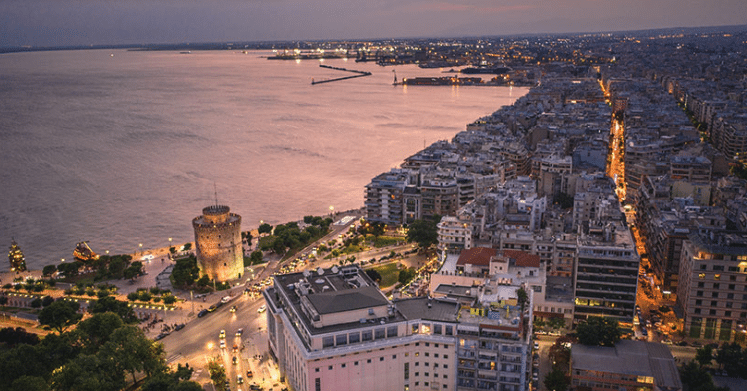Beautiful beaches, mind-blowing bulwarks, fetching frescos, and a centuries-old faith on full artistic display—all good reasons to visit Thessaloniki, Greece, where you can have all of that and more!
Greece’s second-largest city, and a biblically significant one, Thessaloniki—perhaps better known as Thessalonica—is an impressive “open-air museum.” Walk just about anywhere in this breathtaking northern Greek city and you will discover evidence of both its Christian history and its line of conquerors ranging from the Romans to the Ottomans to the Byzantines.
Today in Thessaloniki, you are more likely to be conquered with kindness—or at least a healthy dose of friendliness by the welcoming residents. A city with over 15 early Christian and Byzantine UNESCO World Heritage-listed sites is unparalleled in its confluence of art, architecture, and historic Christianity.
And while there is a lot of religious history to be found here, there is also the beauty of the paintings and mosaics that adorn the walls of Thessaloniki’s churches, basilicas, and monasteries. Although Byzantine art, including the sometimes austere and mysterious religious icons, may not be everyone’s cup of tea, their very survival over the centuries attests to the painstakingly intricate artistry that created them.
The biblical significance of Thessaloniki cannot be underestimated. Paul came to this prominent port passageway city from Philippi on his second missionary journey and preached in the main synagogue for at least three weeks—or longer, according to some scholars.
Two books in the Bible were written to the believers in Thessaloniki by Paul—books in which readers can feel Paul’s deep concern for the beleaguered community of believers attempting to keep the faith in an affluent trade city. Paul encourages these battle-worn Christians to take heart in what is considered to be the most convincing proof text for the Rapture (1 Thessalonians 4:13-18).
Thessaloniki’s architecture is certain to induce euphoric feelings in visitors to this religious city. One such vision of grandeur is the Rotunda, an imposing monument and repository of exquisite sacred art. Commissioned by Caesar Galerius in the 4th century AD, it belonged to a large architectural complex that also included a racetrack and a palace. When Christianity entered the scene, the Rotunda served as a “Martyrium”—a shrine to martyred saints.
Another impressive religious site is the Agia Sophia, a basilica-type church built in the 8th century AD. It holds the distinction of being Thessaloniki’s spiritual beacon owing in part to its unbroken history of active worship. The mosaics and religious paintings in the church are exceptionally beautiful.
But most vacationers do not come halfway around the world just for art and architecture. A little fun in the sun is always a lure, and Thessaloniki offers plenty of opportunities for outdoor recreation, such as taking a hot thermal bath or a trek up the majestic Mt. Olympus.
Close by, in enchanting Sithonia, are beaches that are unparalleled in Greece. Travel brochure words like “crystal clear” and “pristine” come to mind, but the hype is real. Even more real is the word “hidden.” There are a lot of hidden beaches in the area that you can enjoy after a day of art and architecture.
###
Experience this captivating Greek city where history unfolds before your very eyes—through its architecture and art, the Rock of Ages is revealed. Apostle Paul made his mark here, dedicating two books of the Bible to speak to the city’s battle-worn believers—offering them hope that does not disappoint and faith that stands the test of time.
Email Cindy at cindy@israeladvantagetours.com or
visit www.israeladvantagetours.com to make your trip of a lifetime a reality!
Originally posted at israeladvantagetours.com

